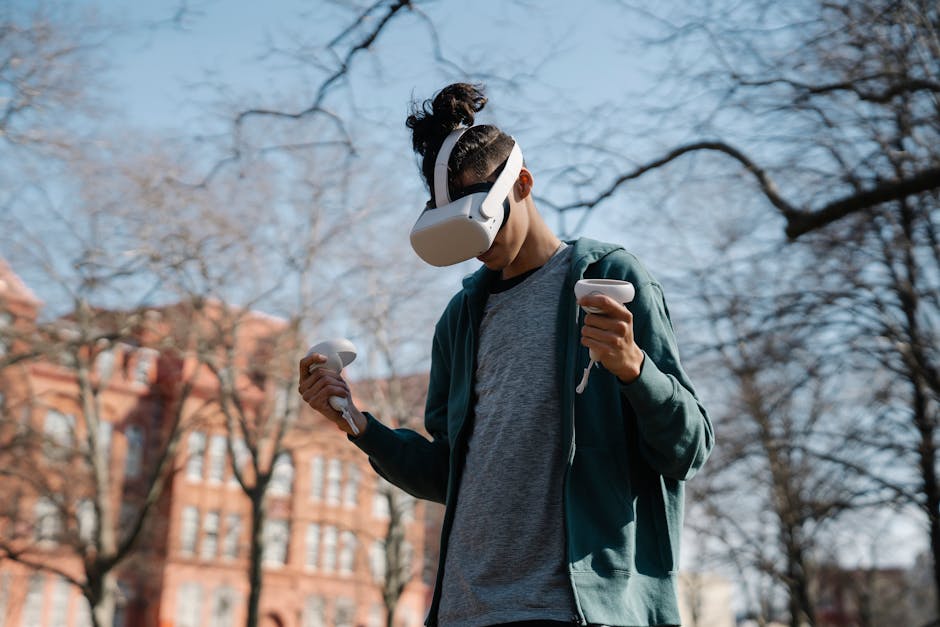Build Your Personalized Metaverse: A Guide to Digital Reality Reconstruction
Have you ever dreamed of crafting a digital fantasy world that reflects your unique interests and passions? With the rise of the metaverse, this once-imaginary idea can now become a reality, even for those without extensive technical knowledge. Welcome to the age of Digital Reality Reconstruction, where you can build your personalized metaverse using open-source tools. In this insightful guide, we will explore how to create immersive digital environments that inspire creativity and community, no matter your tech background. Let’s dive in!
Understanding the Metaverse: More Than a Buzzword

The term "metaverse" has surged in popularity, especially with the advent of virtual reality (VR) and augmented reality (AR). But what does it really mean? Simply put, the metaverse is a collective virtual shared space that merges the physical and digital worlds. Imagine attending virtual concerts, hosting gatherings in fantastical locations, or exploring digital art galleries—all from the comfort of your home. It's not just a futuristic concept; it’s happening now, and anyone with the right tools can participate.
The vision of an individual metaverse tailored to personal desires and hobbies is captivating. It allows you to express creativity, connect with like-minded individuals, and explore ideas previously limited to the imagination. However, before crafting this reality, understanding the technology behind it is essential.
Key Open-Source Technologies for Building Your Metaverse

A multitude of open-source tools can help you build an engaging metaverse experience. Below are some standout technologies that can empower your creativity:
1. Web-based Platforms: A-Frame and Three.js

-
A-Frame: This web framework, built on HTML, is a favorite among developers for creating VR experiences. It's user-friendly and allows for rapid prototyping. If you want to dive right into VR without extensive coding knowledge, A-Frame is a great starting point.
-
Three.js: For those seeking more control over 3D graphics, Three.js offers a robust library powered by JavaScript. It provides a straightforward way to create dynamic 3D content that can run in web browsers. With a plethora of tutorials available, you can quickly learn to manipulate 3D elements for your metaverse.
You can explore these platforms through community-driven resources, such as the Mozilla Developer Network where tutorials and projects are abundant.
2. Game Engines: Unity and Godot

-
Unity: While not entirely open-source, Unity’s free tier is incredibly powerful for creating 3D environments. It supports VR, AR, and can export to multiple platforms, making it a versatile choice. The vast library of assets and plugins enhances your ability to create personalized experiences.
-
Godot: This fully open-source game engine stands out for its straightforward interface and strong community support. It's an excellent option for beginners and allows for both 2D and 3D game development. Godot is especially appealing to those looking for a lightweight and efficient alternative.
Find tips and tricks tailored for these engines in the “Unity Forum” or the “Godot Documentation” where fellow developers share their experiences and guidance.
3. Social and Collaborative Platforms: Mozilla Hubs and Decentraland

-
Mozilla Hubs: This VR platform focuses on social interactions, enabling users to create their virtual spaces and share them with others. The easy-to-use interface allows for quick customization, perfect for beginner creators eager to host gatherings in their metaverse.
-
Decentraland: A decentralized virtual world powered by the Ethereum blockchain. Users can buy, sell, or build upon plots of land. It’s an excellent opportunity for users interested in this emerging digital economy and provides tools for creating art installations, games, or entire communities.
Both platforms illustrate how the metaverse can nurture social connections, with various resources available to help new users navigate their features.
Getting Started: Your Step-by-Step Guide to Building a Metaverse

Let’s break down the process of crafting your unique metaverse experience into manageable steps:
Step 1: Define Your Vision

Before diving into technology, take some time to think about your ideal digital world. Consider the following questions:
- What themes resonate with you? (e.g., nature, nostalgia, urban landscapes)
- Who do you want to engage with in your metaverse? (friends, fellow enthusiasts)
- Which activities do you want people to be able to do? (explore, socialize, create)
Using a tool like Miro for brainstorming can help visualize your ideas.
Step 2: Choose Your Tools

With a clear vision, it’s time to select the appropriate technology to bring it to life. Review the open-source options listed above and identify which suits your skills and goals best.
Step 3: Community Engagement

Look into online communities dedicated to the tools you’ve chosen. Forums and Discord groups often share insights and can become a source of inspiration as you build. Engaging with others who share your interests can also lead to collaborations or feedback that enhances your project significantly.
Check out the Digital Shadowboxing article for insights on ensuring privacy in your new digital landscape.
Step 4: Start Building

Begin creating by following tutorials tailored to your selected platforms. Don’t hesitate to experiment! Embrace trial and error as essential parts of the learning process. Many open-source communities provide examples and templates to help you start quickly.
As you gain confidence, consider incorporating interactive elements, artwork, and user-generated content into your metaverse. Use GitHub to find projects that inspire you or contribute your creations.
Step 5: Share and Collaborate
Once your digital space starts to take shape, invite others to explore it. Gather feedback and make improvements based on user interactions. If your metaverse is designed for social engagement, hosting events or collaborative experiences increases its value.
Explore fun community events that can amplify your metaverse experience, such as online art exhibitions or virtual game nights. Such activities foster engagement and camaraderie, allowing you to cultivate an active user base.
Step 6: Keep Evolving
The beauty of a metaverse is that it's never truly finished. As technology evolves and user expectations shift, adaptability becomes key. Regularly seek ways to update and enrich your space, incorporating feedback and ensuring your digital realm remains engaging and interactive.
Community Resources for Continuous Growth
Building your metaverse experience is just the beginning—you'll benefit from a wealth of ongoing education and support. Here are a few resources:
- Online Courses: Websites like Coursera or Udemy offer courses on Unity, A-Frame, and other relevant technologies that cater to various skill levels.
- User Groups: Platforms such as Meetup can connect you with local or virtual groups focused on VR, AR, or game development.
- YouTube Tutorials: Channels dedicated to digital art creation, game development, and open-source software provide a plethora of free tutorials and demonstrations.
For more innovative strategies on managing your online presence, check out our article on Transforming Your Digital Footprints.
Final Thoughts: Embrace Your Creative Journey
Building your personalized metaverse using open-source tools is more than just a project; it's an invitation to explore creativity, technology, and community. Whether you're a seasoned tech enthusiast or a curious beginner, the journey of digital reality reconstruction can be both fulfilling and exciting.
Remember to define your vision, choose the right tools, engage with like-minded individuals, and keep your experience evolving. As you navigate this new frontier, let your imagination run wild and craft a metaverse that not only reflects your interests but also invites others to share in that adventure. Embrace your creative journey today and watch as your digital world unfolds before your very eyes!



